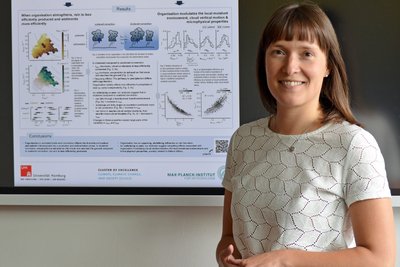Jule Radtke receives 2023 CFMIP-GASS early career scientist award

Trade wind clouds are ubiquitous in the tropical oceans and play an important role in cooling the Earth by reflecting solar radiation. How their population, and thus their cooling effect, evolves in a warming climate is a major uncertainty in climate projections. One difficult aspect is that trade wind clouds often organise themselves in mesoscale patterns that appear to be associated with precipitation. However, the interaction between these two processes is still poorly understood. This makes it difficult to better understand the sensitivity of the trade wind cloud population to perturbations such as a warming climate.
Jule Radtke investigates the relationship between spatial organisation and precipitation development using high-resolution hectometer-scale simulations conducted for the period of the EUREC4A field campaign that took place in 2020. In these simulations, she decomposes the pathway to surface precipitation into two phases: the formation phase, in which cloud droplets are converted into rain, and the sedimentation phase, in which the formed rain falls to the ground, part of which evaporates before reaching the surface. She finds that organisation affects how these two phases contribute to the development of surface precipitation, and concludes that the pathway to precipitation differs with organisation.
A publication on these analyses and results is currently under review for “Geophysical Research Letters”. A pre-print version is available at the following link: https://doi.org/10.22541/essoar.167979635.58663858/v2
Contact
Dr. Jule Radtke
Max Planck Institute for Meteorology
jule.radtke@mpimet.mpg.de
